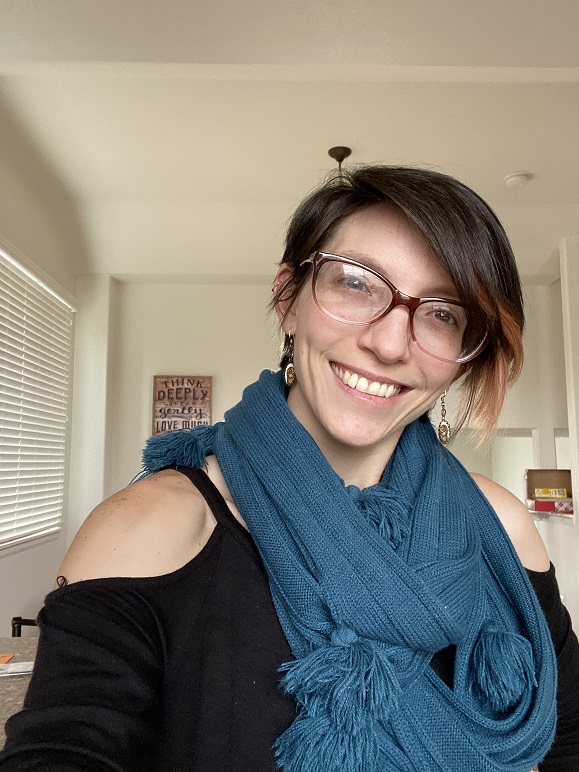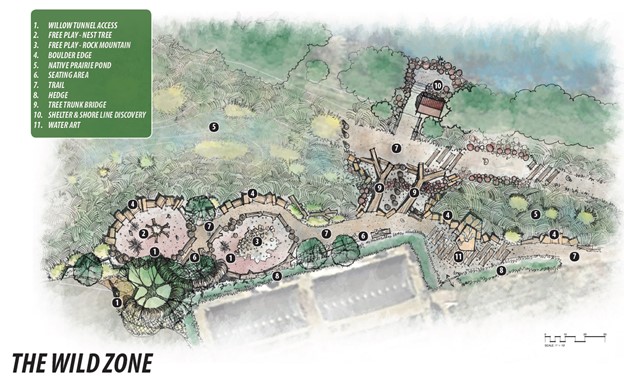Catholics in Conservation
Many people of faith have felt called to work in the field of conservation, and each brings their own unique gifts to the field! Join us as we highlight the work of other Catholics in Conservation!
Lindsey Marshall

My name is Lindsey Marshall. I grew up in Texas and New Mexico, then attended Colorado State University and earned a Bachelor of Science degree in Wildlife Biology, and Master of Science degree in Conservation Leadership. For the past four years I have worked as a partner with the National Park Service as publication support for their Natural Resource Condition Assessment Report Series. I’m a cradle Catholic, married for six years and have 3 small children whom I love to share the beauty of creation with!
From the very beginning God intended for us to be connected to nature. God charged Adam with naming each animal and tending to them and the garden in Eden. First and foremost, Adam was to protect (shamar) the woman, the garden, and every other living thing in Eden. It makes sense then that there are vast benefits of being outside and in nature for us all.
Many Saints have been quoted on the importance of nature:
“A single sunbeam is enough to drive away many shadows” (St. Francis of Assissi)
“Nature is our best teacher” (St. John Chrysostom)
“Respect for life and for the dignity of the human person also extends to the rest of creation, which is called to join man in praising God” (St. John Paul II)
“We need to find God, and He cannot be found in noise and restlessness. God is the friend of silence. See how nature – trees, flowers, grass – grow in silence; see the stars, the moon, and the sun, how they move in silence. We need silence to touch souls” (St. Mother Teresa of Calcutta)
“Every day my love for the mountains grows more and more. If my studies permitted, I’d spend whole days in the mountains, contemplating the Creator’s greatness in pure air” (Bl. Pier Giorgio Frassati)
Fostering this connection with nature must be intentional. In today’s culture of fast-paced screen-dominating entertainment it takes work to create space and slow down outside. But one way to naturally encourage a connection to creation is providing natural, wild areas for outdoor play.
Along with connecting spiritually with God through nature, it is also important to understand the health benefits of being outdoors, particularly for children, and the benefits of natural areas used for outdoor play. In Richard Louve’s book, Last Child in the Woods, the author coins the term “nature deficit disorder” to describe the ever-growing separation of children from nature, and the manifold consequences that this has on the burgeoning generation. An emphasis on more structured learning in school, parent’s fears of the unknown outside, and the hypnotic pull of electronics have seen an increase in physical and mental ailments. In contrast, allowing for opportunities of outdoor and unstructured play has been corelated with lower blood pressure, reduced anxiety, and leads to increased attention, particularly in school-aged children. Outdoor play is thought to increase motor skill development, problem-solving, conflict management skills, and social skills.
Finding ways to connect with nature was my goal when I partnered with the High Plains Environmental Center (HPEC) in Colorado for my final Masters project. I was immediately drawn to the HPEC’s executive director’s idea of a “Wild Zone” where kids could get dirty, make nature art, play with sticks, and create lasting memories of their adventures in nature that they would (hopefully) carry with them for the rest of their lives.
The other appeal to this project was its location: in the middle of a suburban neighborhood. In many studies location and proximity to natural spaces determines how much time children spend outdoors, with a negative correlation between living in cities or suburban areas and time spent outside. Incorporating natural spaces within these urban settings increases the likelihood of children forming an authentic connection to nature.
The Wild Zone at the HPEC is an evolving area shaped with the help of volunteers over time. Natural elements that were already present in the area, such as rocks, sticks, and willow branches are used to invoke imagination and experiential learning. The “loose parts” encourage creativity. Tunnels and “chairs” made of living willow branches open little eyes to the wonders and beauty of creation as God’s artistic masterpiece. A nest tree made from the stump of a large tree allows children to imagine the simple life of a bird who relies totally on provision from the Lord.’s


Each of these elements are simple in nature and invite children to connect with creation in a personal way. Catholic schools, churches, and other organizations can also use these methods to create natural space for children, where they can re-connect with creation and the Great Creator himself.
Having such a fun mechanism to encourage outdoor play is important not only from an ecologist point of view, but also for the family. As a mother of three small children who is also in the field of natural resources, linking nature with faith is one of the lessons I hope they will take with them as they grow. For me, it is important that I raise faithful Catholics who will know their place among God’s creations and be the stewards of the earth that He intended them to be.
In our daily lives, these lessons come in the form of playing outside in natural areas, going for hikes, and admiring the beautiful plants around us. It is also realized in the way we speak of God’s creations, learning about animals and how their natural histories work together in harmony within an ecosystem. And finally, speaking of God as a great Artist who wants us to see a reflection of His beauty in the world around us:
“Wow, look at the stars and the moon! Can you believe God made those?”
“Look at the pretty mountains! God is such a great sculptor” and
“Look at the sunset! God painted that in the sky for you because He loves you so much!”
When we form a connection with nature, we grow closer to God who is the creator of it all. When we become responsible stewards of His creations, we communicate our care and love for the Lord through care and love of all living things. Let us work to find this connection through education, prayer, and play.

This is an excellent article. I work for the Urban Ecology Center in Milwaukee, WI, and our work is based on many of the same principles that you discussed and that are laid out in Richard Louv’s book. Keep up the good work at HPEC… I love the “Wild Zone” idea.
Thank you for the comment, and for all of the great work you do!